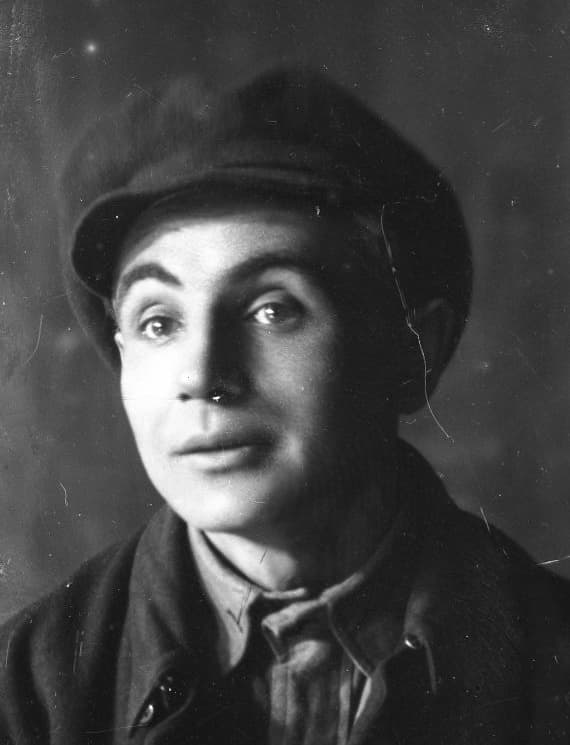There are no videos of productions directed by Les Kurbas; however, the Museum of Theater, Music and Cinema of Ukraine does have a large collection of photos of the Berezil Theater’s performances in Kyiv and Kharkiv. Museum staff have tried to bring those performances to life through animated videos made by grouping the photos in chronological order. Modern technology was used to create a new kind of museum exhibition from all the materials held in the Museum’s collection. Although it’s not possible to recreate all the scenes, visual images and sounds, this does bring us closer to understanding Les Kurbas’s directorial ideas and innovations.
All three animated videos were made in 2014-2015. We plan to continue this work using unpublished digitized footage and the latest technologies.
Reconstruction of scenes from The People’s Malakhii by Mykola Kulish. Berezil Theater, 1928. Directed by Les Kurbas
Reconstruction of scenes from the performance – Ihor Barsehian
Researcher – Iryna Chuzhynova
Project director – Iryna Meleshkina
Reconstruction of scenes from Maklena Grasa by Mykola Kulish. Berezil Theater, 1933. Directed by Les Kurbas
Reconstruction of scenes from the performance – Ihor Barsehian
Researcher – Iryna Chuzhynova
Project director – Iryna Meleshkina
Reconstruction of scenes from Gas. Berezil Artistic Association, 1923. Directed by Les Kurbas
The script written by Kurbas based on George Kaiser’s play Gas (1919) is lost. It was supposed to be published in the journal Semaphore. The scenario for the animated video was based on A. Zucker’s Russian translation of Kaiser’s play and the program and libretto for the 1923 performance by the Berezil Artistic Association.
The score by Anatolii Butskyi, who wrote the music for Gas, has also not survived, but descriptions of it did. Mykola Savchenko’s memoirs contain descriptive notes of the music that was performed by a 58-person orchestra. To convey the musical picture and rhythm of the performance, contemporary industrial music of the 1920s was used: Sergei Prokofiev’s ballet The Steel Step (1927) and Alexander Mosolov’s Factory: Machine Music (1928). Mosolov’s work clearly expresses urban-constructivist imagery and uses serial technique, polyrhythm and rhythmic ostinatos. There is noise in the instrumentation. Prokofiev’s music is devoid of emotion and conveys the mechanics of movement.
Reconstruction of scenes from the performance – Ihor Barsehian
Author of the scenario, translation, music selection – Olena Stadnik

